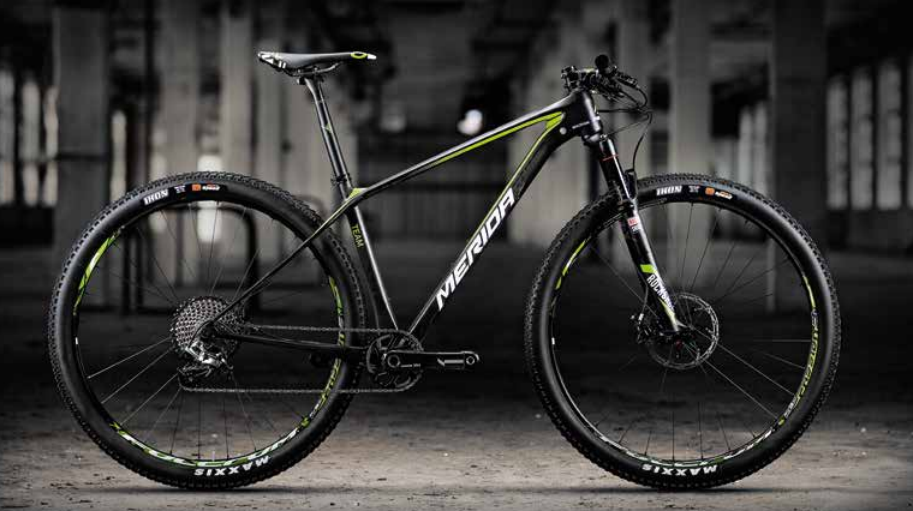On Friday before the World Cup in Albstadt, Merida unveiled the new hardtails they have been developing. While it was no secret that Merida had a new racing bike in the works, given Jose Hermida has been racing on a ‘camouflaged’ version so far this year – we just didn’t know the specifications, save for speculation.
So looking at the above from Hermida, we could see that the front looked lower, the rear wheel closer to the seat tube, and that he could carry about one litre of espresso.
Thankfully, more details were to come! The biggest change is perhaps in the geometry. Reacting to the changing nature of XCO and even marathon (XCM) courses, Merida’s R&D team added length to the top tube, dropped head tube height by 1cm, and have moved to Boost spacing to allow a much shorter chainstay length. They are 433mm in the Big.Nine, and 423mm in the 27.5″ wheeled Big.Seven.
So with a longer reach (of 25mm) a lower head tube and combined with a shorter stem, riders should be able to have more weight on the front wheel for direct steering, but with a shorter back end the input into the trail for pedalling and pushing through the rear wheel when cornering will also be much better. Pity people still making stems 100mm or longer, as even Hermida has dropped from 110mm to 80mm on the Big.Nine.

Merida are about the details
There’s more to it than some longer, shorter and lower tube measurements. Merida have incorporated the ‘Flex Stay’ for many years, and it has been refined with natural materials to offer greater flex for better comfort, and traction – therefore greater control.

This is aided by the new FlexPost, in the updated seat tube size of 30.9mm. The post is designed to flex, that’s in the name, but the tube sizing also offers greater strength, and better dropper post compatibility if that suits a riders’ needs.
Cabling and routing is also updated. While Merida already had their ‘Smart Entry’ system, a new section in the bottom bracket shell keeps the hoses and cables taut – reducing any noise inside the frame for a silent ride.

With the change to Boost (148×12) spacing in the rear, Merida have also worked with Dt-Swiss to create a custom axle. It uses a removable 6mm allen key handle (which will work for the fork axle too) that is just 48g, with the lever weighing 28g. The lever can be mounted, or kept off for race day.
The Big series are 1x specific, which does take away any chance for a chain device, which might be a risk for pure XCO. The top Big.Nine frame weighs 1005g in a medium, and this includes the chainstay and downtube protector, cabling system ports, seat clamp, derailleur hanger and the through-axle and lever.
What’s interesting is that Merida engineers even took aerodynamics into account, modelling parts of the Big series off the Scultura road frames. Given the long distances and fast speeds of some marathons and stage races, and the narrow winning margins, this is an intelligent design parameter.
The Big Series frames will be available in CF5, CF3 and Lite (aluminium) models. While geometry is standard across all three, the CF5 has the denser carbon layup for lower weight, and the Lite models forego internal routing and other benefits from carbon fibre.
Merida have shown that they are invested in their hardtail line – perfect for an Olympic year, and yet more evidence that the hardtail isn’t dead, it’s just evolving.
